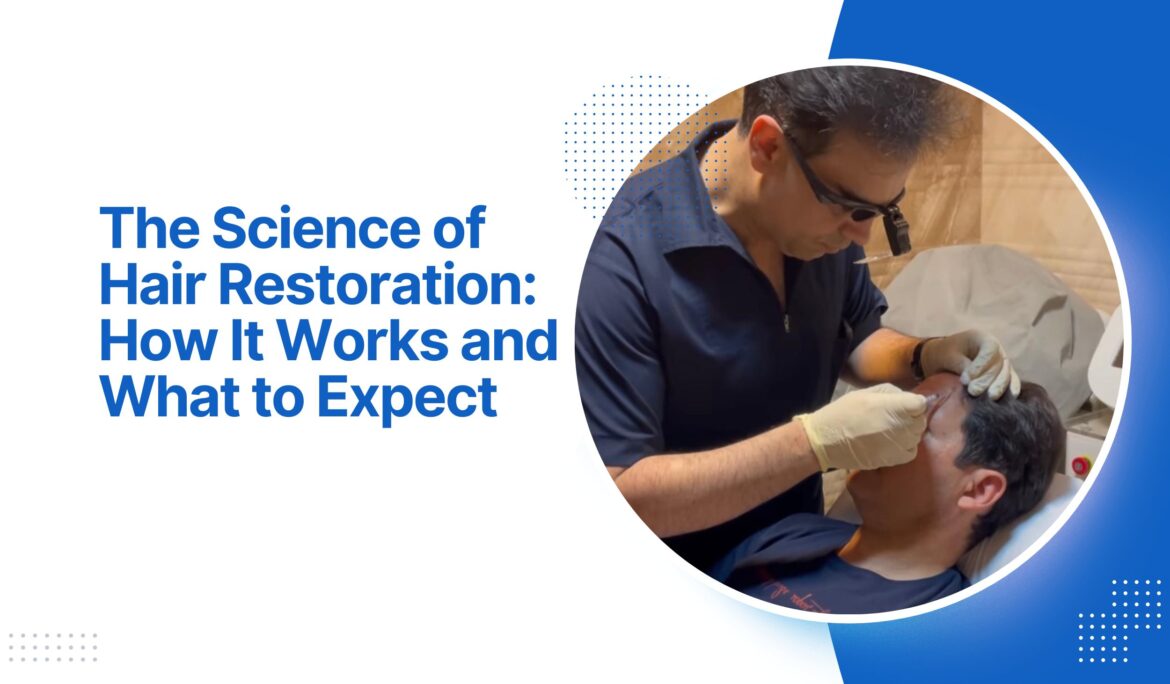Welcome to Rejali Medical, where we specialize in the science of hair restoration. Hair transplants are performed to add extra hair to a thinning or balding region of your head. It is accomplished by transplanting hair from thicker areas of the scalp or other regions of the body to the thinning or balding area of the scalp.
Worldwide, around 60% of men and 50% of women have some sort of hair loss. People frequently utilize over-the-counter medicines to address this, including topical treatments such as minoxidil (Rogaine).
Another way of hair restoration is hair transplantation. The first scalp hair transplant was conducted in Japan in 1939. Physicians perfected the “plug” procedure during the next several decades. This procedure entails transplanting huge tufts of hair.
Surgeons began employing mini- and micro-grafts to reduce the appearance of transplanted hair on the scalp over time.
How It Works
Generally, hair transplants are more effective than over-the-counter hair restoration solutions. However, there are several things to think about:
- It takes about one year for you to see the hair transplant results
- Transplanted hair, like natural hair, may thin down with time
- People with dormant hair follicles may have less successful transplants, but a 2016 study by Trusted Source shows that plasma treatment can assist up to 75% or more of transplanted hairs fully growing back.
Hair transplantation is not suitable for everyone. So you can have a free consultation with us to figure out if you are a good candidate
How does a hair transplant work?
Simply explained a hair transplants hair from one part of your body to another. It is commonly collected from the back of your head, but it may also be obtained from other places of your body.
Before beginning a transplant, your surgeon sterilizes the region where the hair will be taken and numbs it with a local anesthetic. You can also request medication to sleep through the process.
Your surgeon will then use one of two transplant methods: FUT or FUE.
Follicular unit transplantation (FUT)
FUT is also known as follicular unit strip surgery (FUSS). Your surgeon will execute the following stages during a FUT procedure:
- The surgeon uses a scalpel to remove a section of your scalp, generally from the back of your head. The strip is normally 6 to 10 inches long but can span from ear to ear.
- Stitches are used to close the wound where the scalp was removed.
- Your surgeon and their helpers use a knife to cut the scalp strip into smaller pieces. They may divide the chunk into up to 2,000 smaller graft fragments. Some of these grafts may include only one hair.
- The surgeon cuts small holes on your scalp where hair will be transplanted with a needle or a blade.
- The surgeon inserts hairs from the excised scalp into the puncture wounds. This is referred to as grafting.
- They then wrap bandages or gauze around the surgery locations.
The amount of grafts you receive is determined by the following factors:
- type of hair you have
- size of transplant location
- hair quality (including thickness)
- hair color
FUE stands for follicular unit extraction
Your surgeon will take the following steps to do an FUE procedure:
- They shave the back of your head hair.
- The surgeon next extracts individual hair follicles from the scalp skin. You’ll notice little marks where each follicle was extracted.
- As with the FUT treatment, the surgeon cuts small holes in your scalp and transplants hair follicles into the holes.
- They next apply bandages or gauze to the surgery site.
Recovery and Expectations
Your scalp may be quite sensitive after surgery. You may need to take pain relievers for a few days. Your surgeon will have you wear bandages over your scalp for at least a day or two. They may also give you an antibiotic or an anti-inflammatory medication to take for a few days. Most patients can return to work within 2 to 5 days of the procedure.
The transplanted hair may fall out 2 to 3 weeks following surgery, but you should observe new growth within a few months. After 6 to 9 months, the majority of individuals will notice 60%-70% new hair growth.
Risks of Treatment
Transplants, like any other type of surgery, have hazards such as bleeding and infection. Although these complications are not common. Scarring and unnatural-looking new hair growth are also possible.











